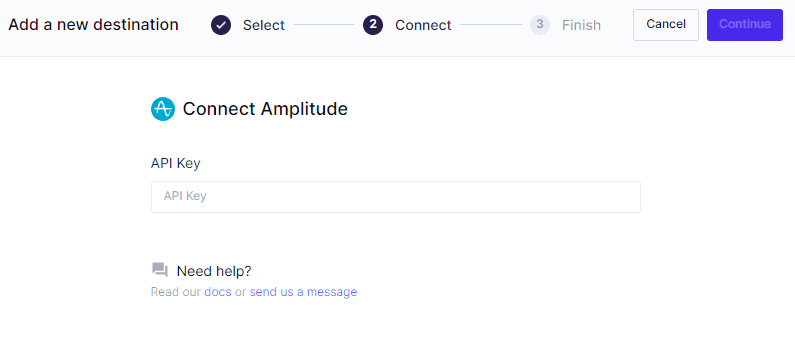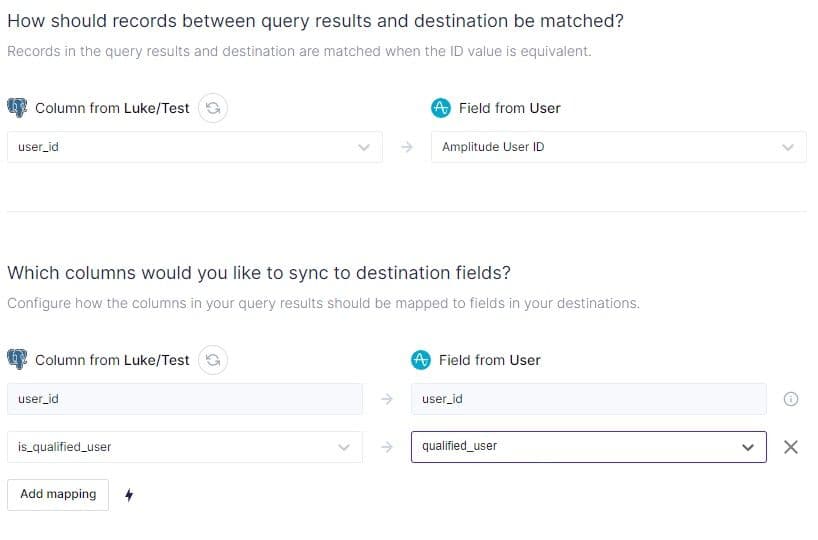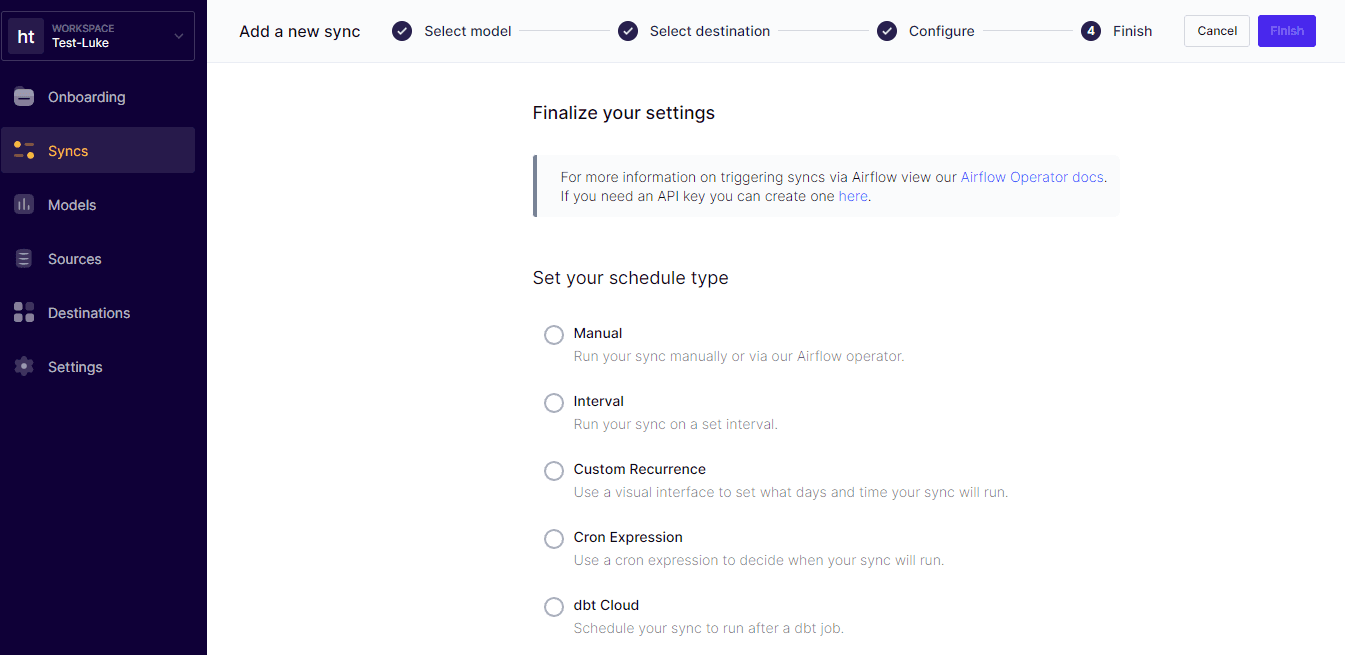Announcing Amplitude’s Integration with Hightouch
With a few clicks, you can sync data from data warehouses directly to Amplitude to perform deeper analysis and better understand user behavior.
We are excited to announce Amplitude’s integration with Hightouch. With a few simple clicks, you can sync data from data warehouses like Snowflake, GoogleBigquery, Amazon Redshift, Databricks, or Postgres directly to Amplitude to perform deeper analysis and better understand user behavior.
The Challenge
Amplitude is great at capturing user actions and building custom segments on top of product usage and behavioral data. But sometimes you need more granular insights specific to your business to answer questions like “how many Workspaces does the average user create or belong to?” (for a B2B product) or “how many high-value customers use this particular feature?”
Custom data models and objects like Workspaces, Accounts, customer lifetime value (LTV), subscription type, whether a lead is qualified or not, etc exist within your data warehouse like Snowflake. This warehouse acts as a single source of truth for your business, combining information across various data sources (e.g. sales tools, marketing tools, customer success tools, finance tools, etc.).
To supercharge your insights and enrich information on your users, you need to make those custom data models in your warehouse available in Amplitude. That is exactly what Hightouch does, through a process called Reverse ETL.
The Solution: Reverse ETL
Reverse ETL is the process of copying data from a central data warehouse to SaaS tools (like Amplitude) used for growth, marketing, product, sales, and support.
At its core, Reverse ETL works to democratize the data that was once only available in the warehouse to enable Operational Analytics and shift the focus from simply understanding data, to actually putting that data to work in the tools you use to run your business.
Reverse ETL focuses on turning insights into actions automatically: without enriching Amplitude with data specific to your business, you are potentially missing out on key insights (like ___ that will change your pricing model). As you’ll see below, data-driven companies like CircleCI enrich Amplitude with data from their warehouse to unlock deeper insights
Case Study: CircleCI empowers their Product teams to measure ROI of experiments with Amplitude and Hightouch
As a continuous integration platform, CircleCI helps users automatically test and validate code, as well as identify errors in their pipelines.
With over 800,000 developers and 30,000 organizations using the product, CircleCI generates tons of new users on a daily basis. At this volume, it has become a challenge to determine which leads have the highest buying intent and proactively target them. While CircleCI’s Product, Engineering, and Marketing teams use Amplitude to understand user behavior, they needed a way to run and analyze experiments on qualified users, not just all signups. This proved to be challenging because CircleCI’s data model for “qualified users” only existed with Snowflake (their data warehouse).
Using Hightouch, CircleCI syncs this qualified users data model back into Amplitude so that these various teams can create KPIs and track and measure experiments for new features and campaigns to answer questions like:
- Where are our qualified users dropping off?
- How can we design a more intuitive flow to increase conversion for qualified users?
This information is then used to run different experiments and drive product design.
“Amplitude is much more intuitive than Looker; we don’t need an analyst to set everything up because it is a purpose-built tool. With Hightouch it was really simple to set up a dbt model around a set of facts that we wanted to sync back to Amplitude as events. We just have to make sure the logic is correct and Hightouch takes care of the rest.” – Seamus McKinsey, Sr. Analytics Engineer at CircleCI
How to start syncing data to Amplitude with Hightouch
Connect to a data source (like Snowflake) and create a data model (such as qualified users) using SQL or dbt.


Choose a destination to send data to (in this case, Amplitude). You can connect to Amplitude using your Amplitude API key (see our docs for more information).

Map the appropriate columns from your data model that you’d like to update in Amplitude. For example, you can create a field in Amplitude for “is_qualified_user”.

Set a schedule for your sync (ex: hourly, daily, etc). Then it will run automatically. That’s it!

(see our docs for more info)
Get started with Amplitude and Hightouch:
Visit Hightouch’s docs for more information on how to get started with sending data from your warehouse to Amplitude.
You can sign up for Hightouch directly or book a demo. The first destination is completely free, so you can sync unlimited data to Amplitude for no charge.

Luke Kline
Product Evangelist, Hightouch
Luke is a Product Evangelist at Hightouch working on the marketing team. Previously Luke worked for a large consulting firm specializing in analytics, data engineering, and cloud migrations.
More from Luke




